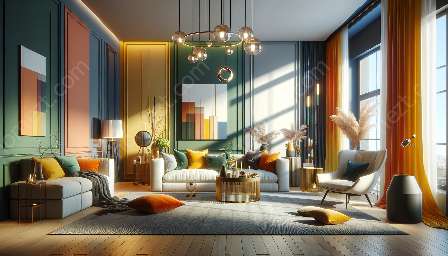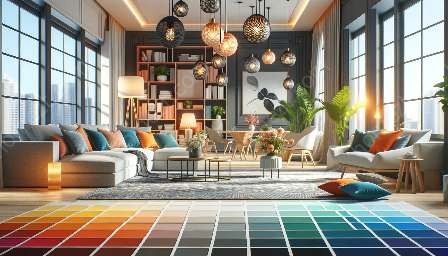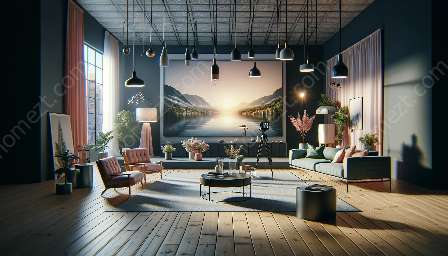Color has a profound impact on our emotions and behavior, making it a powerful tool in interior design and home furnishings. Understanding the psychology of color and its application in color theory can help create harmonious living spaces that cater to our psychological needs. In this comprehensive guide, we delve into the intricate relationship between psychology, color theory, and home furnishings.
The Basics of Color Theory
Color theory is the art and science of using color to create visual aesthetics and communication. It encompasses the principles of color mixing, harmony, and the psychological effects of color. Understanding the basics of color theory is crucial for creating a cohesive and appealing interior environment.
The Psychology of Color
The psychology of color explores how different colors can impact human emotions, moods, and behavior. This field of study is rooted in the understanding that colors have the power to evoke specific psychological responses. Different colors can elicit emotional and physiological reactions that influence our perceptions and interactions with our surroundings.
Red: Passion and Energy
Red is often associated with passion, energy, and warmth. It is a stimulating color that can evoke strong emotions and increase heart rate. In home furnishings, red can be used to create a cozy and vibrant atmosphere, but it should be applied in moderation to avoid overwhelming the senses.
Blue: Calm and Tranquility
Blue is known for its calming and tranquil effects. It is often used in interior design to create a sense of serenity and relaxation. Incorporating blue hues into home furnishings can promote a soothing ambiance, making it ideal for bedrooms and living spaces.
Yellow: Optimism and Happiness
Yellow is associated with optimism, happiness, and energy. It can brighten up a space and create a cheerful atmosphere. When used in home furnishings, yellow accents can add a lively touch, promoting a sense of warmth and positivity.
Green: Balance and Harmony
Green represents balance, harmony, and nature. It has a calming and rejuvenating effect, making it suitable for creating a peaceful ambiance in living spaces. Incorporating green elements in home furnishings can bring a sense of freshness and tranquility into the environment.
Color Combinations and Harmony
Understanding how different colors interact and complement each other is essential for achieving color harmony in home furnishings. Color combinations can evoke specific moods and visual appeal. Analogous, complementary, and triadic color schemes are examples of color harmonies that can be applied to create cohesive and balanced interior designs.
Application in Home Furnishings
The principles of color theory and the psychology of color play a significant role in home furnishings and interior design. When selecting colors for furniture, walls, and accessories, it's important to consider the psychological impact they will have on the living space and its inhabitants. By strategically applying color theory and understanding the psychology of color, homeowners can create personalized and emotionally enriching environments that cater to their individual needs and preferences.
Color and Mood
The use of warm colors like red, orange, and yellow can create an energetic and vibrant ambiance, while cooler tones such as blue, green, and violet can induce a sense of calm and relaxation. By carefully selecting colors that align with the desired mood for each room, homeowners can establish a cohesive and harmonious atmosphere within their living spaces.
Personalizing with Color
Color preferences are deeply rooted in individual experiences and cultural influences. Understanding the psychological significance of colors can guide homeowners in personalizing their living spaces. By incorporating favorite colors or hues that resonate with personal memories, emotions, and aspirations, individuals can infuse their homes with a sense of emotional connection and identity.
Creating Focal Points
Strategic use of bold and accent colors can create focal points within home furnishings, drawing attention and adding visual interest to specific areas. Whether through statement pieces of furniture, accent walls, or vibrant decor accessories, the careful placement of colors can enhance the aesthetic appeal and overall impact of the interior design.
Conclusion
Understanding the psychology of color and its application in combination with color theory is essential for creating emotionally appealing and visually engaging home furnishings. By leveraging the power of color to evoke specific emotions and moods, homeowners can craft living spaces that resonate with their personal and psychological needs. Through careful selection and application of colors, individuals can transform their homes into harmonious and uplifting environments that support their well-being and enhance their overall quality of life.





